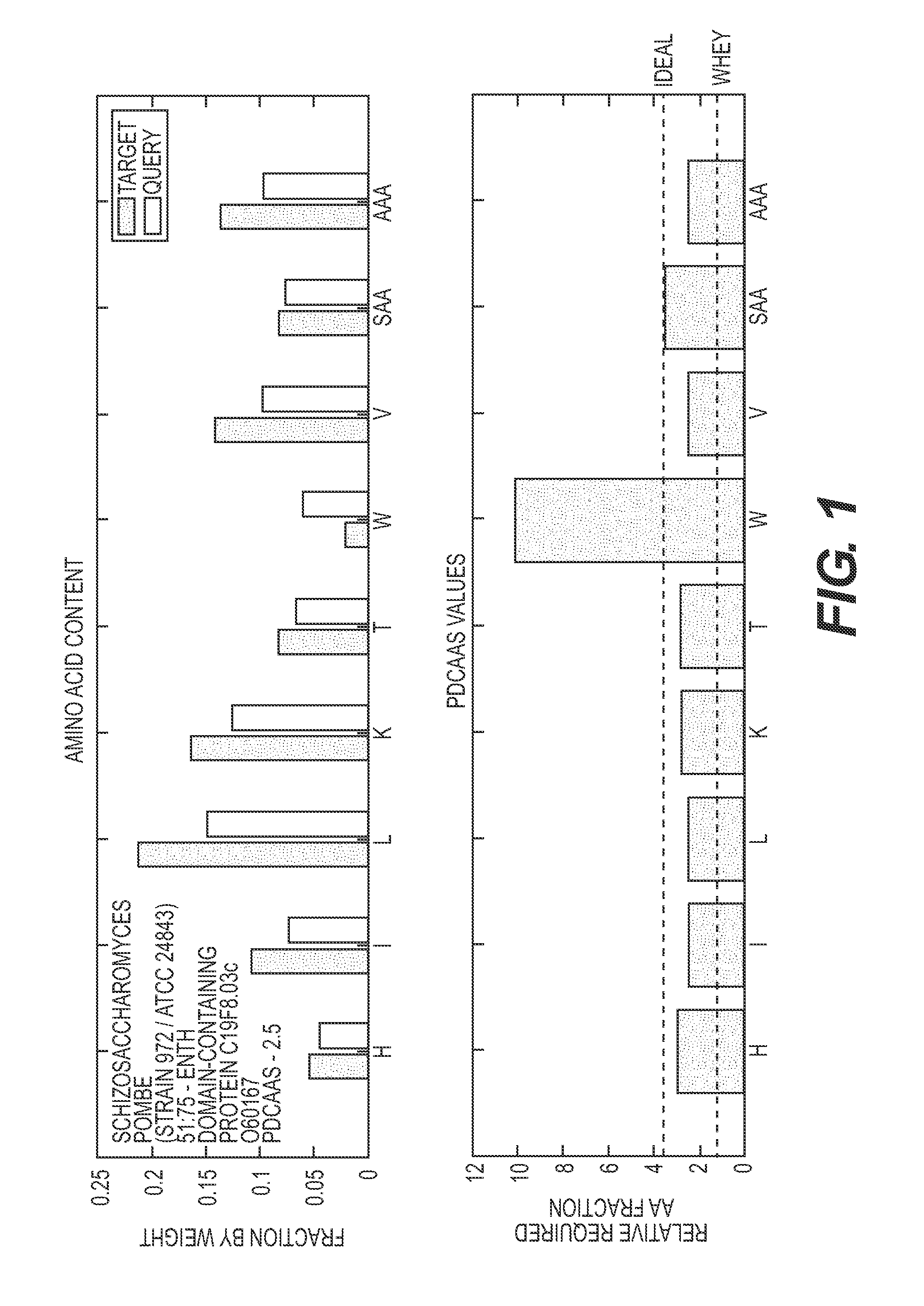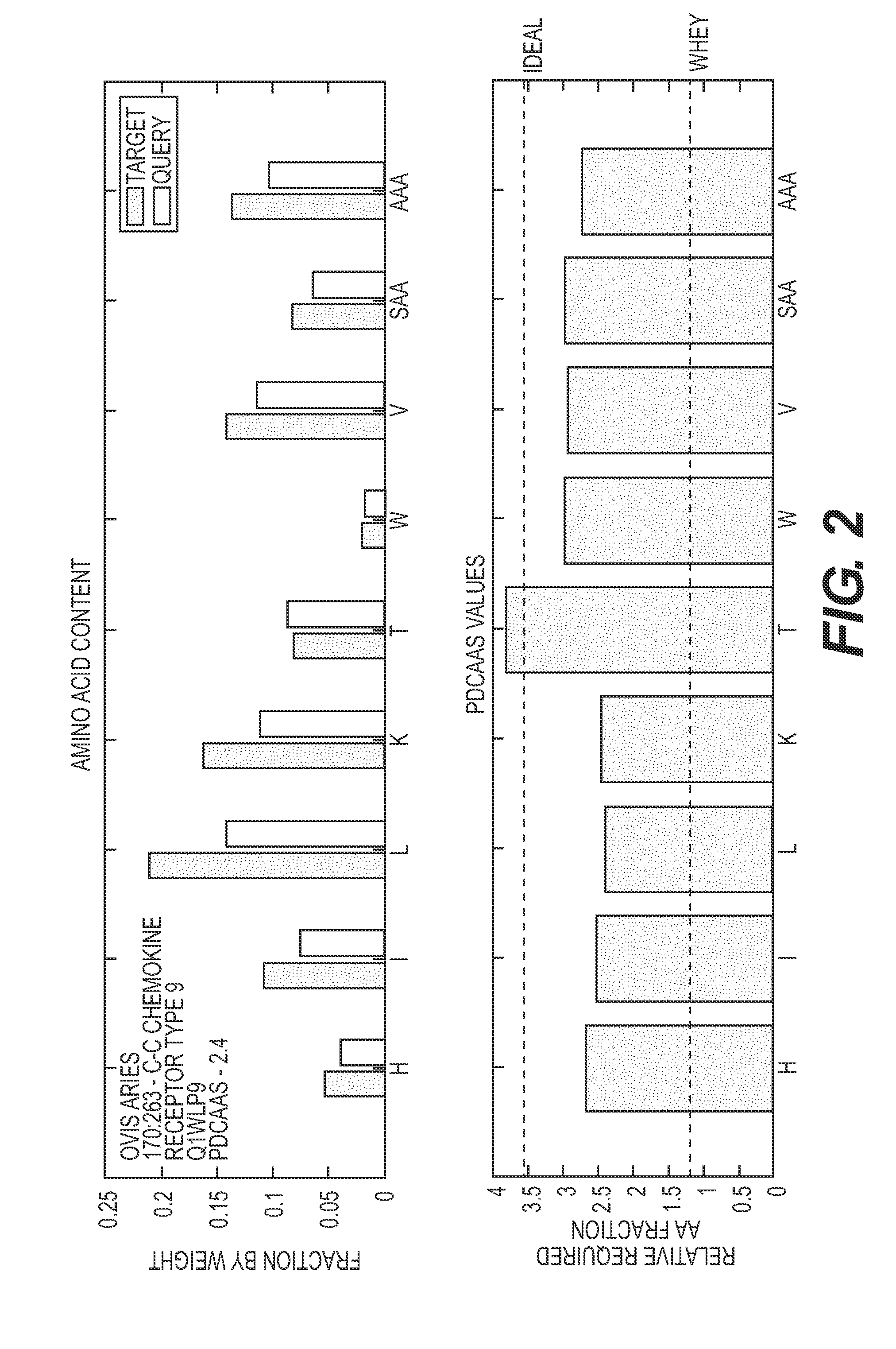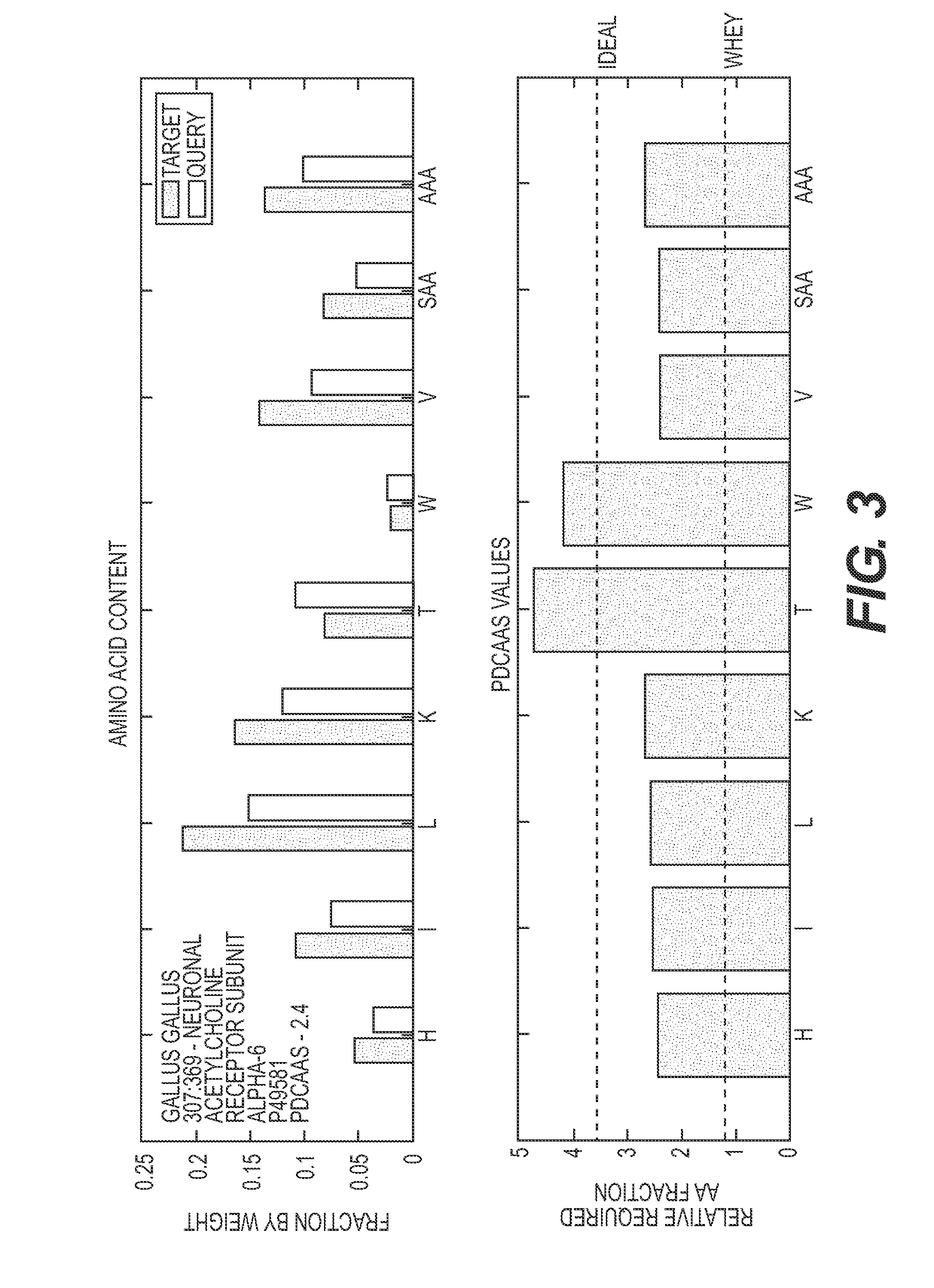Nutritive Fragments, Proteins and Methods
a technology of protein and nutrient fragments, applied in the field of nutritive fragments, proteins and methods, can solve the problems of protein positively affecting energy expenditure and lean body mass, body cannot synthesize certain amino acids, and most fruits and vegetables are poor sources of protein, so as to increase the thermogenesis of the subject, maintain or increase muscle mass, and muscle strength. the effect of increasing the number o
- Summary
- Abstract
- Description
- Claims
- Application Information
AI Technical Summary
Benefits of technology
Problems solved by technology
Method used
Image
Examples
example 1
Identification of Naturally Occurring Proteins and Fragments
[0394]Naturally occurring proteins and fragments of naturally occurring proteins with useful PDCAAS values and / or similarity to a chosen EAA / NEAA (Whey) target amino acid profile were identified by searching the full set of sequences in the reviewed UniProt database (also known as the SwissProt database). The full database set of proteins was trimmed to proteins that are non-human and non-viral in origin, and do not contain the words “toxic”, “toxin”, “virus”, or “viral” in either the protein or species name. The search was also limited to only those proteins that have been identified due to experimental observation of the protein itself or its mRNA transcript.
[0395]For each protein the weight fraction of each amino acid was computed and the PDCAAS value derived. The proteins were also evaluated for similarity to EAA / NEAA (Whey) target amino acid profiles of 70 / 30 and 60 / 40 using a Euclidean distance metric as described her...
example 2
Naturally Occurring Protein Fragments Ranked by PDCAAS Score
[0397]In this example the PDCAAS Score was used to rank protein fragments identified in the SwissProt database using the approach of Example 1. The 1000 fragments from the analysis with the highest PDCAAS scores were identified and are included in the Sequence Listing. The 100 fragments from the analysis with the highest PDCAAS scores were identified and are presented in Table 6. In Table 6A the proteins the fragments are derived from are identified by UniProtID number in the first column of the table. The fragment itself is further identified by the amino acids positions in the protein that appear at the N and C termini of the fragment (second column). For example (12:145) indicates that the N-terminus of the fragment is amino acid 12 of the protein and the C-terminus of the fragment is at amino acid 145 of the protein. The third column indicates whether the fragment contains every essential amino acid (1) or not (0). The ...
example 3
Protein Fragments Ranked by Euclidian Distance from a 60 / 40 EAA / NEAA (Whey) Profile or a 70 / 30 EAA / NEAA (Whey) Profile
[0403]In this example the Euclidian distance from a 60 / 40 EAA / NEAA (Whey) target amino acid profile or from a 70 / 30 EAA / NEAA (Whey) target amino acid profile was used to rank protein fragments identified in the SwissProt database using the approach of Example 1. After protein fragments were identified in this way the PDCAAS of each fragment was also determined. The 1000 fragments from the analysis with the smallest Euclidian distance from a 70 / 30 EAA / NEAA (Whey) target amino acid profile are presented in the Sequence Listing. The 100 fragments from the analysis with the smallest Euclidian distance from a 70 / 30 EAA / NEAA (Whey) target amino acid profile are presented in Table 7. In Table 7A the proteins the fragments are derived from are identified by UniProtID number in the first column of the table. The fragment itself is further identified by the amino acids positio...
PUM
| Property | Measurement | Unit |
|---|---|---|
| concentration | aaaaa | aaaaa |
| weight | aaaaa | aaaaa |
| weight | aaaaa | aaaaa |
Abstract
Description
Claims
Application Information
 Login to View More
Login to View More - R&D
- Intellectual Property
- Life Sciences
- Materials
- Tech Scout
- Unparalleled Data Quality
- Higher Quality Content
- 60% Fewer Hallucinations
Browse by: Latest US Patents, China's latest patents, Technical Efficacy Thesaurus, Application Domain, Technology Topic, Popular Technical Reports.
© 2025 PatSnap. All rights reserved.Legal|Privacy policy|Modern Slavery Act Transparency Statement|Sitemap|About US| Contact US: help@patsnap.com



